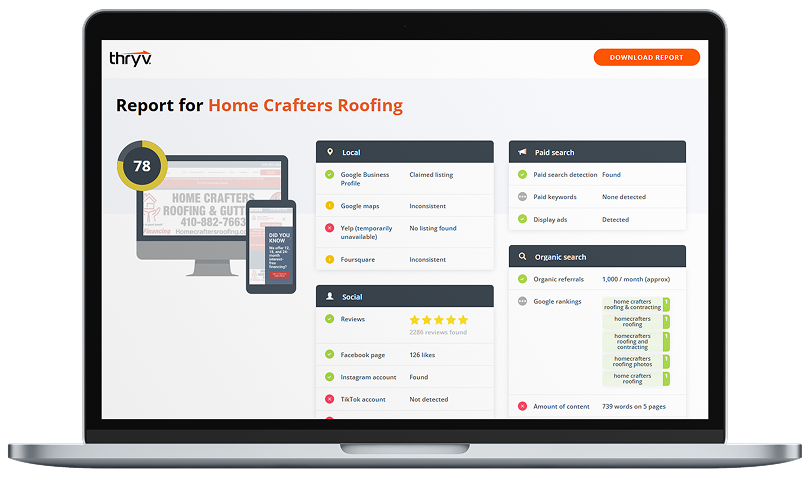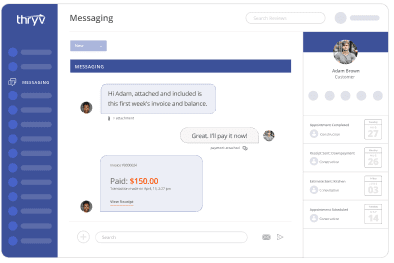SEO is crucial when it comes to getting discovered and reeling in customers. It’s how your business communicates with Google and other search engines that your website and its content are relevant and worthy of gracing the search results page.
But the latest SEO trends are consistently changing, and it often feels like a moving finish line.
While it can be overwhelming at times to keep up with new SEO trends, it would be a disservice to your business to ignore them.
The 2022 SEO trends list may seem familiar but the influence they hold has never seen a shift like this. Here’s what you need to know.
AI Will Play Its Heaviest Role to Date
As artificial intelligence continues to transform how we interact with online content, you’ll need to factor it into your SEO strategy. This is going to play the biggest role in your success in 2022.
Did you know that Google has a specific AI algorithm called RankBrain? Maybe it hadn’t crossed your mind but it’s time to give it some thought.
RankBrain is expected to become one of the most important factors in ranking on Google’s SERPs. Of course, Google isn’t going to spill all the details on the ins and outs of RankBrain but, we do know that click-through rate and time spent on a page will play key factors when RankBrain is prioritizing content.
We might be getting ahead of ourselves, though. Let’s start at the beginning.
Let’s Talk Basics. What Is AI in SEO?
Artificial Intelligence in SEO analyzes the relationships between sites, content pages and search engine rankings. It examines the connection between the intended search and actual content then fills in the blanks.
Thanks to AI, searchers land results based on their past searches, devices, locations and hundreds upon hundreds of other wild factors.
Practice split testing. Optimization strategies that work for one set of keywords might not work as well for another group of keywords.
When and Where Is AI Used?
The way we create, optimize and push content is changing, and it will change the way marketing teams operate. For content creators, that looks like crafting content that meets specific search opportunities and touching on those competitive opportunities that AI sheds light on.
There’s a science to choosing the right topics to tackle, even though the writing is an art. When AI identifies trending industry topics and competitive gaps, jump on it. Keep the content well-organized, valuable and engaging.
Along with choosing the right topics, part of the strategizing includes pulling in those SEO experts on the staff. They will need to spend a healthy amount of time analyzing those opportunities and strategizing.
Part of that strategizing includes taking a look at the hosting site. Is it reliable? Or do slow speeds and constant crashing kill your customer experience?
How can you get a leg up on the competition, other than identifying and addressing opportunities?
- Refresh Content: It’s easy to write up a piece and forget about it once you’ve clicked publish. Try to get out of that habit. Remove what’s no longer relevant, add what’s new and fix the tone of the writing to fit your brand as it is now. While the age of the page can aid in its search ranking, don’t let that published date mark your piece as irrelevant. Update the published date as needed. The visit history will still carry over and help your content in ranking, even though it appears to be new on the surface.
- Automate your SEO Processes: Automation makes life easier so invest in software that can highlight what’s going on with your SEO strategy and automate repetitive tasks like tracking your position, monitoring brand mentions, analyzing keyword intent and more.
Implementing AI into your SEO strategy will play a large part in your business staying competitive.
Long-Form Content Reigns King
Remember when we mentioned time spent on the page was important to the algorithm? Well, looks like the length of your writing plays a role in that. Now, this isn’t necessarily news but, there is a bit of a change in what is now considered long-form content.
Say goodbye to 800 words being the standard for blogs and 2,000 being considered long-form. In 2022 you’ll need to apply pressure if you want to stay relevant, reputable and get to the top of the rank, you’ll want to step up your game. Long-form content is looking more like 3,000 words.
Studies show that longer content dominates page one of search rankings.
But why?
You’re probably wondering what’s the significance of long-form writing, especially in marketing. No, Google isn’t counting your words. Well, at least there’s no proof of that. The truth is, it contributes to the time people spend on your pages. But, it’s also more than that.
Ask yourself, what’s the purpose of the content you’re creating? To flip those curious readers into real-life customers. That doesn’t happen without putting in a little extra elbow grease.
There are 4 MAJOR benefits to long-form content.
- Higher Online Visibility. This is all due to the correlation to post length and search engine ranking. Posts with 2,000 words easily slide into the top ranks. Long-form content can establish your brand as an expert on the subject matter. That credibility means more organic traffic — and isn’t that our whole goal while building out an SEO strategy?
- Better Link Building. Long-form content allows plenty of space and opportunity for adding in links. Alert those businesses that their links are being used, and they’ll be more likely to share your piece in hopes of boosting their own linking efforts.
- Social Media Sharing. Detailed long-form pieces can also encourage readers to share because there’s a higher likelihood that something within it will resonate with them. Ensure your blogs have social buttons located on the page for easy sharing.
- Higher Reliability, when done correctly. The goal is to be of value to your readers. Give them what they came for so they’re more likely to stop to read your next post. You’ll slowly prove your brand as an industry pro. As that trust grows, so will your visibility along with the opportunity for a boost in conversion.
Quick Tip: Get the most out of your long-form pieces by choosing evergreen topics. This way your content stays in the social media sharing rotation.
Mobile-Friendly Is a Must for Rankings
We’ve been pushing the need for mobile-friendly websites for a while. We sound like a broken record — we get it. But it’s crucial now. Over 80% of internet users are surfing the web on mobile phones. And it’s estimated that nearly 75% of internet users will only access the internet on their mobile devices by 2025.
That’s not all, so brace yourself. Google predominantly uses the mobile version of the content for ranking. Yes, right now. If you’re not getting the traction you expect from your business’s website, we may have uncovered the reason why. It’s time to stop editing your website in desktop view. Start pouring effort into the mobile view.
61% of users will never return to a website that is not mobile adaptive.
If you’re not sure where to begin, Google offers a free mobile-friendly test for your website. After you locate any usability issues, fix them for the sake of your SEO. If you’re just now hopping on board to building out a mobile-friendly version of your website, here are six tips to keep in mind.
When building out the website:
- Use a responsive theme. This will adjust your content and media automatically for the device’s screen size.
- Check for updates. Updates = improvements. Don’t miss out on a new mobile-friendly component because you were dragging your feet on getting the update.
- Keep themes simple. You want an easy-to-read menu and simple design so that your site visitors can have a smooth experience. Keep in mind complex themes will slow down the loading speed.
To keep your website speed higher:
- Compress images. Try to shorten the size of any high-resolution images but keep in mind that you want to make them look as clear as possible regardless of screen size.
- Remove ads and pop-ups. If your website depends on ads to run, optimize them so they have less of an impact on the speed.
- Use lazy frame loading. By delaying the parts of the page that aren’t visible in that moment, you can pick up the speed and keep your site mobile-friendly. This happens because you have more system resources like bandwidth and connection speed when the page is loaded gradually and only as needed.
47% of users expect a maximum of 2 seconds loading time for an average website.
Avoid these other very simple mistakes that can render you not mobile-friendly and kill your SEO strategy.
- Bad backlinks will label your website suspicious and of low authority with search engines. Remove these irrelevant links and replace them with other high-value industry leaders.
- Oversized, hard-to-read fonts are a no-go. You can craft a great customer experience by taking the time to choose your fonts wisely. There’s no reason your wedding coordinator website should have blocks of text in fancy script.
- Avoid clunky navigation. Take the time to organize your information and minimize the amount of text needed to get the point across in the menu.
- Close-knit linking is the bane of existence for mobile users with larger fingers. Place links far apart to avoid the added stress of unintentional tapping.
Meet Google’s EAT
This is a topic we touched on in last year’s SEO trends and strategies, but because Google continually stresses what an integral part of quality content plays in ranking success, we can’t afford to omit it. So, what counts as quality content? According to Google, the EAT principle is a good place to start.
Expertise
Having the expertise of your industry isn’t enough. You must be able to communicate it effectively, which means you also need to be an expert on who your audience in. Find out what they’re searching for and then create that content. Be sure to understand the ‘why’ behind the search to better guide your content.
Consider what stage these people are in. Would this content fall with the top of the funnel content or should be tailored for the bottom of the funnel? Regardless of where it lands, there needs to be a balance of the information being comprehensive and easy to digest.
While you’re on this route, it would be wise to think ahead. What might your audience be ready to search for next? Start preparing content to meet those searches and get ahead of the competition.
Authoritativeness
Once you’ve got the expertise, it’s time to establish yourself as an authority. Citing experts and adding links from reputable sites add validity to what you’re saying.
However, having your links used by others helps make your brand hold even more authority. By getting your content widely circulated, you unlock an additional way to show authority growth.
The more people who search for your company’s name, the better. And if there’s a keyword included, count it a successful day for your SEO strategy.
Trustworthiness
This can make or tank your rankings with Google. Google’s guidelines mention that too many bad reviews are a red flag of low quality. Make sure your company is addressing and rectifying negative reviews that are left. If you’re not bringing in reviews at all, consider sending out a customer Google Review link to your customers.
This is a process that can be automated following services to save you and your staff time on reaching out to customers manually.
Aside from reviews, there are several other ways to promote trustworthiness on your business’s website and get on Google’s good side.
- Clearly display how customers can contact your business.
- Include a physical location on your website. It should be consistent with the address found on your Google listing.
- Have a secure domain. Google cares about your site having HTTPS because it means your users’ data won’t be hijacked by some horrible 3rd party.
- Make sure your privacy policy is accessible on your website.
- Clearly list your refund and return policy.
- Include details on the description section of the products and services listed on your site.
Some of the information covered should sound familiar. Are you having a full-circle moment? Your personal SEO strategy should also connect this well.
If your business touches on YMYL (Your Money or Your Life) content, you’ll want to make sure you’re meeting the highest levels of E-A-T.
This is content that when presented inaccurately, untruthfully or deceptively, could directly impact your reader’s happiness, health, safety or financial stability. How do you know if your business’s content falls into the YMYL category?
Google’s rundown of YMYL topics include:
- News and current events on topics like business, science, politics, and technology
- Government, law, and civics-related topics (voting, social services, legal issues, government bodies, etc.)
- Financial advice on taxes, retirement, investments, loans, etc.
- Shopping information, such as researching purchases
- Medical advice, information on drugs, hospitals, emergencies, etc.
- Information on people of a particular ethnicity, race, religion, nationality, sexuality, etc.
Add Video to the Game Plan
To say video platforms have exploded would be an understatement. You’ve likely noticed the rise in businesses working video platforms like TikTok, Youtube and Instagram to their advantage.
It’s impossible to scroll through the internet without running into a video. You, too, should be working optimized video content into your SEO strategy.
Stop and think: When you search for something online where are you looking? Do you go beyond the first page of results or shuffle through the tabs to hone in your search? Or do you just type in a few more keywords until it populates the results that provide what you’re looking for?
Here’s the thing, it’s not often people acknowledge the video tab on Google searches, so it’s imperative that you work to get your video found on the universal search.
How Can You Optimize Video for Search?
Helping your videos climb up in rank on search engines has a lot to do with the authority of your website, how direct the video is and how it stands up against other videos in related searches.
Pick your platform carefully
Different platforms serve different purposes so think about your objective for adding video. Are you focused on getting traffic to your website or are you more interested in brand awareness? If you’re looking to just get your name out there, a platform like YouTube might spark your interest.
The downside is that traffic goes to them and the video following yours could be your competition. Yikes. This is why it’s important to research your options.
Transcribe when you can
You may have seen captions along with videos during your scroll sessions. These closed captions not only make your videos more accessible but, also allow bots to use that additional text to act as copy and — you guessed it, rank for more searches. Longer-form video content will have even more of an impact on your rankings.
Capture attention with your thumbnail
Your thumbnail is pretty much your first impression and plays a big role in whether people actually click on the video. Think high-quality, relevant and eye-catching.
The thumbnail should show the activity being done. If you’re a landscaper publishing a video on the importance of leveling the foundation before paving, the person in your thumbnails is going to want to be demonstrating that action.
Videos with custom human thumbnails receive a 30% higher play rate than those without.
Put thought into your title
Video is no different from a blog post when it comes to the title and description. Take the time to craft an engaging title and meta description.
Make a bold statement with simple but powerful wording. You’ll also want to include any keywords with a high search volume. When in doubt ask a jarring question or create a sense of urgency.
Queue the words: Now, Hurry, Must-see. You get the point.
Check for relevancy
The video should be accompanied by relevant content if you’re looking to score high on the search engine rankings. Make sure the page is also optimized for search. If you plan to include multiple videos on a page, be sure the video you want ranking first is placed first.
This is because Google generally shows one video from a page on the search results. If you’re looking to rank a specific video, it’s best to avoid adding others to the page so it gets the attention it deserves.
Embed your video, but not everywhere
This might seem crazy but avoid embedding the same video in multiple places. You’ll begin competing with yourself. Instead, see if the information on the separate pages can be merged with the help of subheadings.
Because SEO is ever-evolving, keeping up with the latest trends will require work. We know it sounds like another task for the to-do list but, the light at the end of the tunnel is that, by combining these top SEO trends and continually optimizing, you can help push your content up in rank.
Whether that is through the use of AI, engaging long-form postings or fresh video content regularly, map out your SEO strategy for 2022 and stay intentional in how you work it.

The Guide to Winning
More Business Online
We’ll show you how to land more customers with a better website and online presence in this free ebook.


